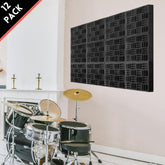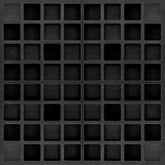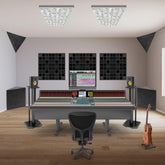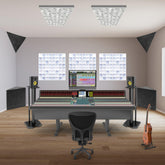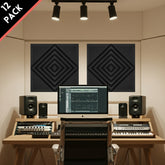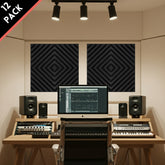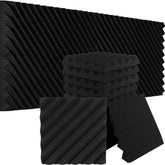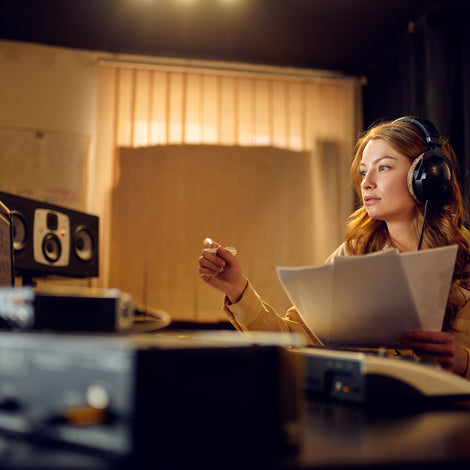Introduction to Sound Engineering: A Beginner's Guide
Introduction to Sound Engineering: A Beginner's Guide
What is Sound Engineering?

Understanding the Role of a Sound Engineer
Sound engineering, also known as audio engineering, involves capturing, recording, manipulating, and reproducing sound. Sound engineers work in various environments, including recording studios, live concerts, and film production. They use a range of equipment and software to ensure high-quality audio output.
Key Responsibilities of a Sound Engineer
A sound engineer's responsibilities include setting up and operating audio equipment, mixing and mastering tracks, and troubleshooting audio issues. They also work closely with musicians, producers, and directors to achieve the desired sound for a project.
Essential Equipment for Sound Engineering
Basic Gear for Your Home Studio
Setting up a home studio requires several key pieces of equipment. Here are the essentials:
- Computer: A powerful computer is the backbone of any home studio. It should have sufficient processing power, RAM, and storage to handle audio software and large files.
- Digital Audio Workstation (DAW): A DAW is software used for recording, editing, and mixing audio. Popular DAWs include Pro Tools, Logic Pro, and Ableton Live.
- Audio Interface: This device connects your instruments and microphones to your computer. It converts analog signals into digital ones that your computer can process.
- Microphones: Different microphones serve different purposes. Condenser mics are great for vocals, while dynamic mics are suitable for instruments.
- Headphones and Monitors: High-quality headphones and studio monitors are essential for accurate sound reproduction.
Acoustic Treatment Essentials
To achieve professional sound quality, acoustic treatment is necessary. Using soundproof panels, acoustic panels, and bass traps can significantly improve the sound within your home studio. These materials help manage sound reflections, reduce echo, and prevent external noise interference.
Understanding Audio Signals
Analog vs. Digital Audio
Audio signals can be either analog or digital. Analog signals are continuous waveforms, while digital signals are discrete numerical values representing sound. Understanding the difference is crucial for effective sound engineering.
Signal Path and Flow
In a recording setup, the signal path typically flows from the sound source (e.g., a microphone) through various processing units (e.g., preamps, compressors) and into the recording medium (e.g., a DAW). Maintaining a clean and efficient signal path is essential for high-quality recordings.
Microphone Types and Techniques
Choosing the Right Microphone
Microphones are critical tools in sound engineering. The three main types are:
- Dynamic Microphones: Durable and versatile, ideal for live sound and loud instruments.
- Condenser Microphones: Sensitive and accurate, perfect for vocals and studio recordings.
- Ribbon Microphones: Vintage-style mics with a warm sound, often used for specific instruments.
Microphone Placement Techniques
Proper microphone placement can make a significant difference in recording quality. Techniques vary depending on the instrument and the desired sound. For example, placing a condenser mic close to a vocalist captures detailed sound, while positioning it further away captures more room ambiance.

Basics of Audio Mixing
Understanding the Mixing Process
Mixing involves balancing individual audio tracks to create a cohesive final product. This process includes adjusting levels, panning sounds, applying equalization (EQ), and adding effects like reverb and delay.
Essential Mixing Tools
- EQ: Adjusts the balance of different frequency ranges within a track.
- Compression: Controls the dynamic range of a track, making quiet sounds louder and loud sounds quieter.
- Reverb and Delay: Adds space and depth to tracks, creating a sense of environment.
Creating a Balanced Mix
A well-balanced mix ensures that no single element overpowers the others. This involves careful listening and adjusting to achieve clarity and cohesion. Monitoring on various speakers and headphones helps ensure the mix translates well across different playback systems.
Introduction to Mastering
What is Mastering?
Mastering is the final step in audio production. It involves fine-tuning the mixed tracks to ensure they sound polished and professional. Mastering enhances the overall sound, ensuring consistency across all tracks and preparing the audio for distribution.
Key Mastering Techniques
- EQ and Compression: Applied subtly to enhance the overall tonal balance and dynamic range.
- Limiting: Ensures the track's volume is at an optimal level without clipping.
- Stereo Enhancement: Widens the stereo image, giving the track a fuller sound.
Preparing for Mastering
Before mastering, ensure your mix is as good as it can be. Address any issues in the mix stage to avoid problems during mastering. Providing high-resolution files to the mastering engineer helps maintain audio quality.
Conclusion
Sound engineering is both an art and a science. By understanding the fundamental concepts, using the right equipment, and applying effective techniques, you can produce high-quality audio. Whether you're building a home music studio or aiming to become a professional sound engineer, this guide provides a solid foundation. Remember, practice and experimentation are key to mastering sound engineering.
ABOUT AUTHOR
House Live Engineer of Free Bird, a live house with the history of South Korea's indie music scene.
Single album/Regular album/Live recording, Mixing and Mastering experience of various rock and jazz musicians

